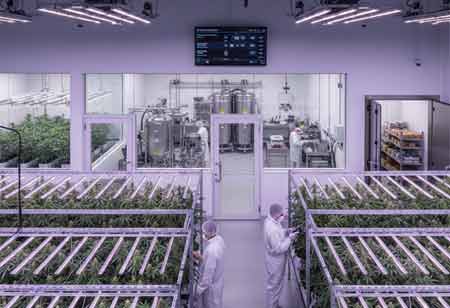Thank you for Subscribing to Cannabis Business Insights Weekly Brief
Cannabis Industry Growth in the Future: Emerging Technologies
The cannabis industry has experienced novel concepts that fundamentally alter how producers cultivate their crops and how customers locate and use cannabis products.

By
Cannabis Business Insights | Friday, January 14, 2022
Stay ahead of the industry with exclusive feature stories on the top companies, expert insights and the latest news delivered straight to your inbox. Subscribe today.
The cannabis industry has experienced novel concepts that fundamentally alter how producers cultivate their crops and how customers locate and use cannabis products.
FERMONT, CA: Technological refinements mostly drive the marijuana industry's evolution. Multiple new technologies are either changing one industry sector or are on the cusp of doing so in another. Consider the most innovative and intriguing technologies in the marijuana market.
A New Wave of Emerging Technologies is rethinking cannabis's Further growth.
Extraction and Cultivation: Investors worldwide have been won over by the marijuana industry, and their money has been well spent. New and cutting-edge plant production techniques have been developed because of the increasing favor for cannabis.
Weed Gummies lead the CBD (cannabidiol) and medical marijuana sectors. To underrate harvest time, increase product quality, and meet consumer demands, it is necessary to utilize cannabis technology in cultivation. As a result, businesses are better able to pay for high-quality merchandise.
New methods for removing and producing CBD are continually being developed. Businesses, for instance, employ remote sensors to monitor the growth of crops.
By implementing these developments in the medical marijuana sector, therapeutic compounds can be divided from marijuana components in patients. In addition, testing cannabis before it is used in the final product ensures its purity and safety.
Cannabinoid Biosynthesis: Cannabis plants contain cannabinoids, chemical compounds or chemical groups.
Most cannabis producers use traditional methods to extract cannabinoids from raw cannabis plants. However, because of these operations, the finished product is more expensive, which is a drawback.
CBD, THC, and other cannabinoids can currently be synthesized at low cost using a new process called cannabinoid biosynthesis. As a result, the medical marijuana industry's major growth drivers are presently investing in this medical marijuana technology, anticipating it to alter the entire cannabis supply chain.
Using micro-organisms, this new extraction process can produce a helpful yeast strain capable of increasing the value of marijuana. The technology is projected to cut manufacturing costs, boost product quality, and lower the final cost of cannabis products.
Affordability and Customizability in the Products: Due to technological advancement, marijuana consumption can now be tailored to the special user. That is to say, up until recently, the only way to take cannabis was through smoking.
Consumers can now ingest marijuana in different forms thanks to advances in marijuana business technology services, including vapes, oils, sweets, candies and gummies, and other food products.
Hence, ensuring that each product has the proper ratio of THC to CBD is critical, which might be an issue. Also, ongoing efforts are to summarize cannabinoids to maximize the product's long-term viability, as each individual's biochemistry processes cannabinoids diversely.
Utilizing an incompatible strain can be a major issue because marijuana has a psychotropic effect. The technology solves this issue by preparing cannabis in precise and controlled amounts.
LED illumination: Another exciting technological innovation to expand the cannabis sector is utilizing LED lights rather than high-pressure sodium (HPS) bulbs.
People are probably wondering how a light got in between the technical ways.
This is because the marijuana cultivation area is connected to lighting technology. If the plant is produced inside, it needs costly high-intensity discharge lights, which intake a large amount of electricity, raising the manufacturing cost.
Well! The cannabis sector (both legal and illegal) has preferred HPS bulbs for quite some time. But regrettably, these HPS bulbs intake a lot of energy and electricity, have a fixed lifespan, and yield a lot of heat, frequently stimulating producers to use an additional energy-consuming temperature control system.
LED lights come with the help of marijuana technology businesses in this instance. LED lights last longer than HPS bulbs, ingest less energy, put less demand on temperature control systems, and have a minimum manufacturing cost, representing the end product is less expensive.






